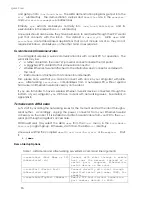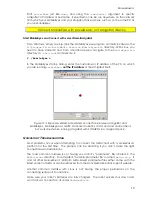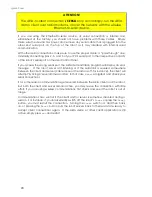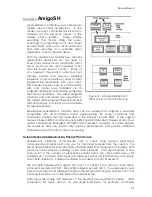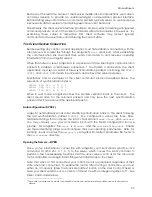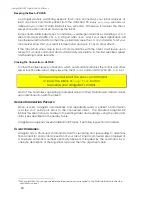
M
OBILE
R
OBOTS
AmigoBot
Although sporting a 16-bit Hitachi H8S-based controller and highly durable
polycarbonate body, the AmigoBot in many ways was an updated Pioneer 1: Released
in Summer of 2000, it reintroduced the concept of a small, lightweight, self-contained
platform ideal for training and education in intelligent mobile robot controls.
Like the original, your new Team AmigoBot, first released in Spring of 2005, has a single
controller board for client-server operation with motor drives, sonar, and other device
supports built in. The principle difference in design from the original model is that the
new AmigoBot sports the advanced SH2-based controller.
Pioneer 3™ and Recent Pioneer 2-DX8™, -AT8™, and
Plus
™ Mobile Robots
Two new models of Pioneer 2 appeared in the summer of 2002, two more at the
beginning of 2003, and the Pioneer 3 debuted in the summer of 2003. All used a special
“P2H8” controller based on the Hitachi H8S microprocessor, with new control systems
software (AROS) and I/O expansion capabilities. The Pioneer 3 and 2-
Plus
robots also
had new, more powerful motor/power systems for better navigational control and
Pioneer 3™ SH Robots
Like your new Team AmigoBot, the latest Pioneer, Performance PeopleBot, and PowerBot
robots—all introduced in summer of 2004—are identical to their predecessors except for
their revolutionary new Renesas SH2-based controller. Software-wise, these new robots
are fully compatible with all other M
OBILE
R
OBOTS
platforms, including Pioneer 1. Their new
Advanced Robot Control & Operation Software (ARCOS) provides unprecedented
performance and expansion, yet can interface and run client programs originally
developed for Pioneer 1, 2, as well as 3 platforms.
To the relief of those who have invested years in developing software for M
OBILE
R
OBOTS
platforms, your new Team AmigoBot truly does combine the best of the new mobile
robot technologies with
Activ
Media’s tried-and-true robot architecture.
Figure 8. PowerBot™ carries over 100 kg of
payload.
3
The interim Pioneer 2-DXf had the same, more-powerful motors as the DX8s and AT8
Plus
.
9






















